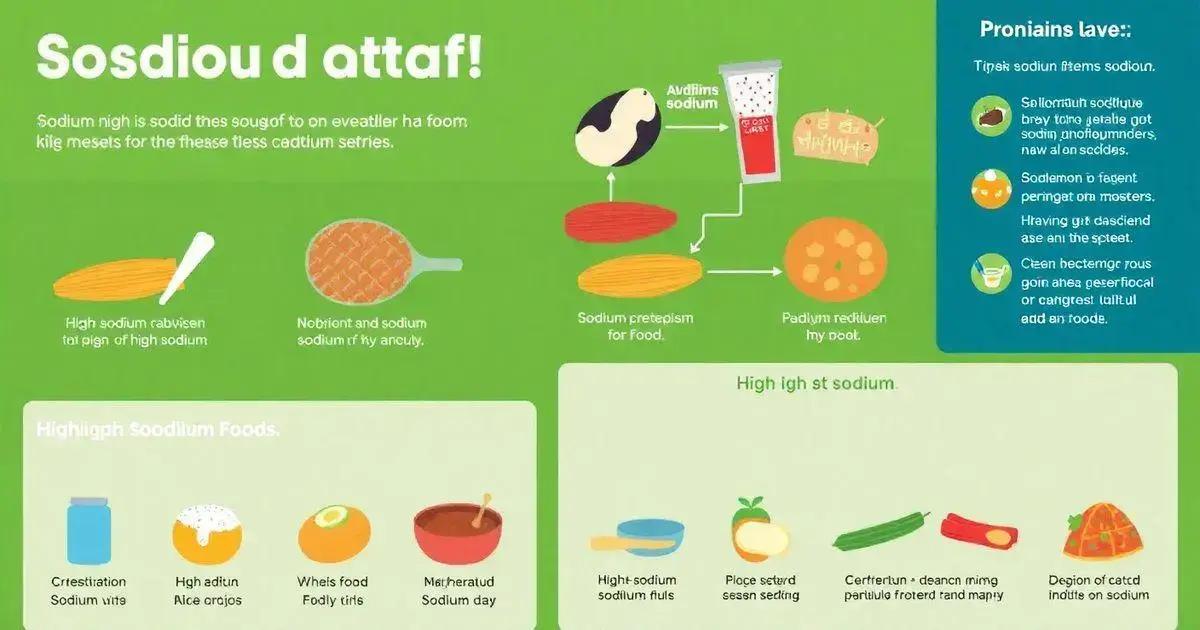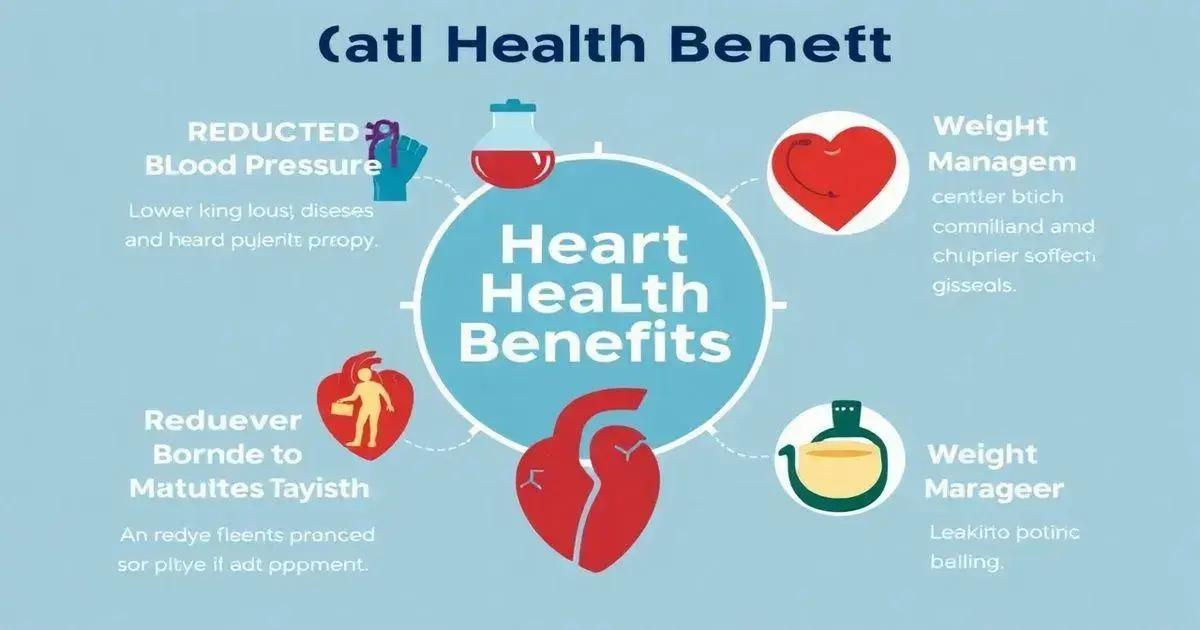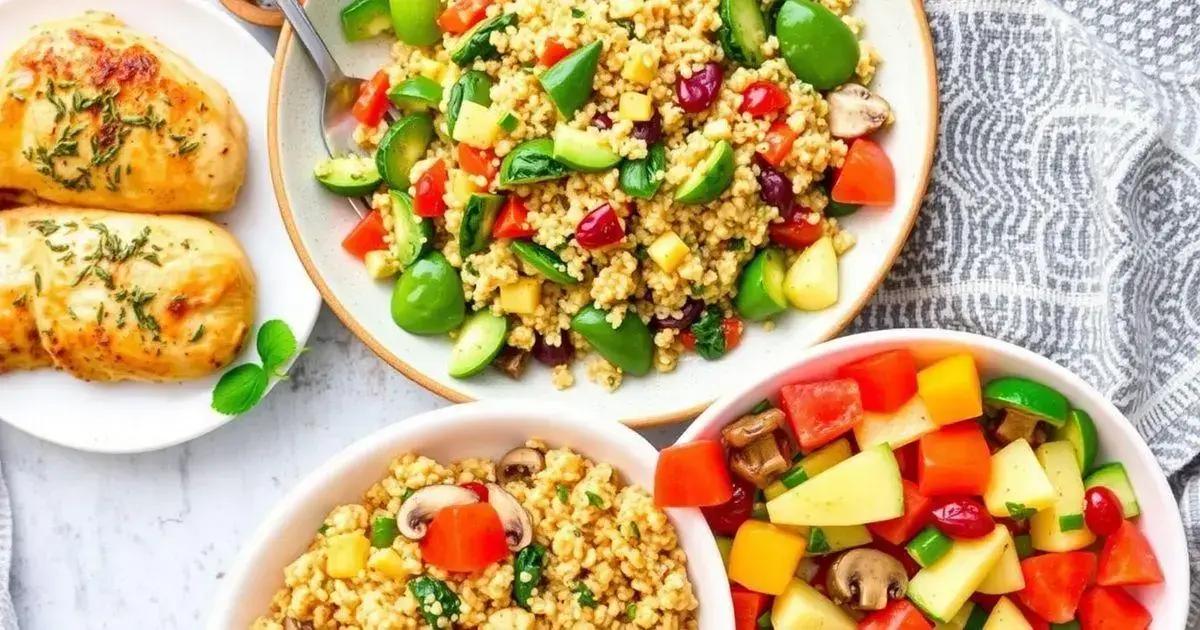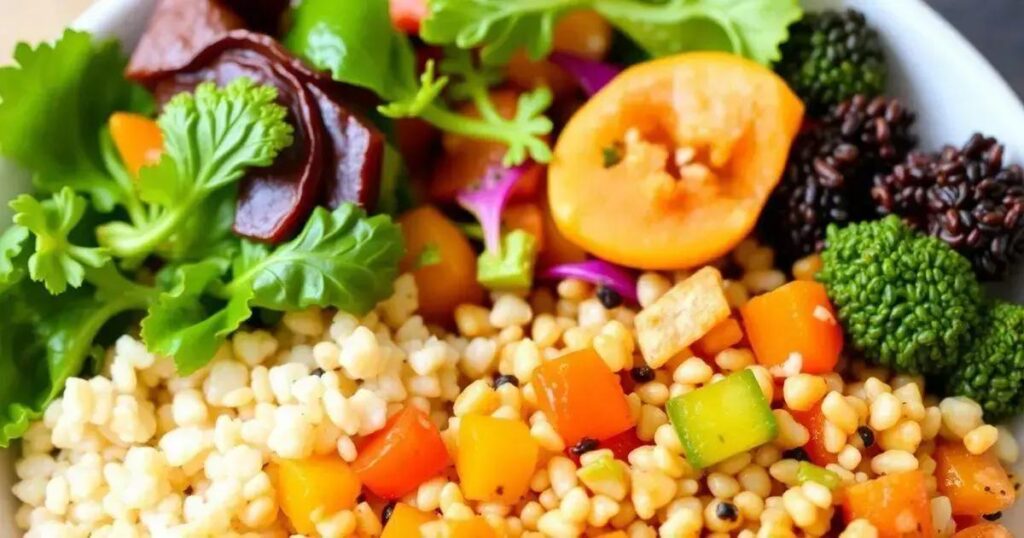A low-sodium diet can significantly improve heart health by lowering blood pressure, reducing the risk of heart disease, and enhancing overall heart function. To effectively reduce sodium intake, focus on fresh foods, reading labels, cooking at home, and incorporating flavorful herbs and spices instead of salt. Delicious low-sodium recipes make it easy to enjoy heart-healthy meals without sacrificing taste.
When it comes to maintaining heart health, adopting a low-sodium diet can be a powerful strategy. Research shows that high sodium intake is linked to increased blood pressure, which is a significant risk factor for heart disease. By incorporating a low-sodium diet, you can enjoy various health benefits, including improved blood pressure levels and a lower risk of heart-related conditions. In this article, we will explore the key aspects of low-sodium diets, their advantages for heart health, practical tips to reduce sodium intake, and some tasty low-sodium recipes to try.
Understanding Low-Sodium Diets

A low-sodium diet means reducing the amount of salt consumed daily. Salt is made up of sodium and chloride, and it’s commonly used to season food. However, too much sodium can lead to health problems, especially for heart health.
How Much Sodium is Too Much?
The American Heart Association recommends limiting sodium intake to less than 2,300 milligrams per day and ideally aiming for 1,500 milligrams, especially for those with high blood pressure. Keeping track of your sodium intake can help manage these amounts.
Sources of Sodium
Sodium is found in many foods, often without us realizing. Processed and packaged foods, like chips, canned soups, and ready-to-eat meals, usually contain high levels of sodium. Even breads, sauces, and dressings can have surprising amounts.
How to Transition to a Low-Sodium Diet
Transitioning to a low-sodium diet can be easier than you think. Start by reading food labels to know the sodium content. Gradually replace high-sodium foods with fresher alternatives, such as fruits, vegetables, and whole grains. Experimenting with herbs and spices for flavor instead of salt can also make meals more enjoyable.
Keeping a food diary can help track your sodium consumption, making it easier to stay on track. Over time, your taste buds will adjust, and you may find that you enjoy food even more without added salt.
Key Benefits for Heart Health

Following a low-sodium diet can bring many heart health benefits. Here’s a closer look at why reducing sodium is important for your heart.
Lower Blood Pressure
One of the primary benefits of a low-sodium diet is lowering blood pressure. High sodium intake can cause the body to retain water, which puts extra pressure on blood vessels. When sodium is reduced, blood flow improves, making it easier for the heart to function.
Reduced Risk of Heart Disease
By adopting a low-sodium diet, you can lower the risk of heart disease. Studies show that people who consume less sodium have a lower risk of stroke and heart attack. Maintaining a healthy heart is crucial for overall well-being.
Improved Heart Function
A diet low in sodium can also improve heart function. It helps the heart pump blood more efficiently and can alleviate symptoms associated with heart failure. Over time, this can lead to a healthier, stronger heart.
Weight Management
Low-sodium diets may assist with weight management. Many high-sodium foods are also high in calories. By cutting down on salt, you are likely to choose healthier options that can lead to weight loss and reduced risk of obesity-related heart issues.
Incorporating these benefits into your lifestyle enhances heart health and leads to a more vibrant, active life.
Tips for Reducing Sodium Intake

Reducing sodium intake is essential for maintaining heart health. Here are some practical tips to help you cut back on salt in your diet.
Read Food Labels
One of the best ways to reduce sodium intake is by reading food labels. Look for products marked “low sodium” or “sodium-free”. Pay attention to serving sizes to ensure you’re aware of how much sodium you consume.
Choose Fresh Foods
Opt for fresh fruits and vegetables instead of canned or processed foods. Fresh produce has little to no sodium and is packed with nutrition. If you must use canned goods, rinse them under cold water to remove some of the salt.
Cook at Home
Cooking at home allows you to control the amount of salt in your meals. Use herbs, spices, lemon juice, or vinegar to add flavor without adding sodium. This can make your dishes delicious without the health risks associated with salt.
Limit Processed Foods
Reduce the intake of processed and fast foods. These foods often contain high sodium levels for flavor and preservation. Instead, try preparing meals from scratch to better manage your sodium consumption.
Incorporating these tips into your daily routine can make it easier to lower your sodium intake and promote better heart health.
Delicious Low-Sodium Recipes

Here are some delicious low-sodium recipes that are not only heart-healthy but also flavorful.
Herb-Roasted Chicken
Ingredients:
- 4 chicken breasts
- 2 tablespoons olive oil
- 1 teaspoon garlic powder
- 1 teaspoon dried rosemary
- 1 teaspoon dried thyme
- Black pepper to taste
Instructions:
- Preheat your oven to 400°F (204°C).
- In a bowl, mix olive oil, garlic powder, rosemary, thyme, and black pepper.
- Rub the mixture on the chicken breasts.
- Place chicken on a baking sheet and roast for 25-30 minutes until cooked through.
Quinoa Salad with Veggies
Ingredients:
- 1 cup quinoa, rinsed
- 2 cups water
- 1 bell pepper, chopped
- 1 cucumber, diced
- 1 cup cherry tomatoes, halved
- 2 tablespoons lemon juice
- 1 tablespoon olive oil
Instructions:
- In a pot, bring water to a boil and add quinoa. Reduce heat, cover, and simmer for 15 minutes.
- In a large bowl, combine quinoa, bell pepper, cucumber, and tomatoes.
- Drizzle with lemon juice and olive oil, then toss to combine.
Spinach and Mushroom Stir-Fry
Ingredients:
- 2 cups fresh spinach
- 1 cup sliced mushrooms
- 2 cloves garlic, minced
- 2 tablespoons olive oil
- Black pepper and red pepper flakes to taste
Instructions:
- Heat olive oil in a pan over medium heat.
- Add garlic and mushrooms, sauté until mushrooms are soft.
- Add spinach and cook until wilted; season with black pepper and red pepper flakes.
Fruit Salad with Honey-Lime Dressing
Ingredients:
- 2 cups mixed fresh fruits (melon, berries, pineapple)
- 1 tablespoon honey
- 1 tablespoon lime juice
Instructions:
- In a small bowl, mix honey and lime juice.
- Add mixed fruits to a serving bowl and drizzle with the dressing.
- Toss gently to coat and serve fresh.
These recipes are simple to make and rich in flavor, perfect for anyone looking to maintain heart health.
The Importance of Adopting a Low-Sodium Diet for Heart Health
In summary, embracing a low-sodium diet offers significant benefits for heart health. By understanding the risks associated with high sodium intake and following practical tips to reduce it, you can greatly contribute to your well-being.
With delicious low-sodium recipes at your fingertips, it’s easier than ever to enjoy nutritious meals without sacrificing flavor. As you make these dietary changes, remember that the journey towards a healthier heart is gradual and achievable.
Prioritizing heart health through a low-sodium diet is a powerful step towards enhancing your overall quality of life.
FAQ – Frequently Asked Questions About Low-Sodium Diets for Heart Health
What is a low-sodium diet?
A low-sodium diet involves reducing the intake of sodium, commonly found in salt and processed foods, to promote better heart health.
What are the main benefits of a low-sodium diet for heart health?
The main benefits include lower blood pressure, reduced risk of heart disease, improved heart function, and better weight management.
How can I effectively reduce my sodium intake?
You can reduce your sodium intake by reading food labels, choosing fresh foods, cooking at home, and limiting processed foods.
Can I still enjoy tasty meals on a low-sodium diet?
Absolutely! There are many delicious low-sodium recipes available that use herbs, spices, and fresh ingredients to enhance flavor without added salt.
How much sodium should I consume daily?
The American Heart Association recommends limiting sodium intake to less than 2,300 milligrams per day, with an ideal target of 1,500 milligrams for better heart health.
Is it difficult to transition to a low-sodium diet?
Transitioning can be simple! Start gradually by incorporating more fresh foods and experimenting with new recipes to reduce your sodium intake effectively.












